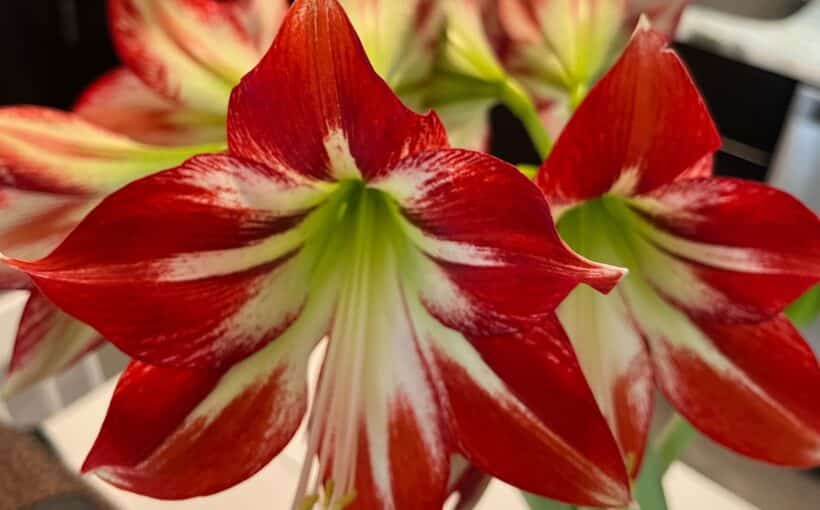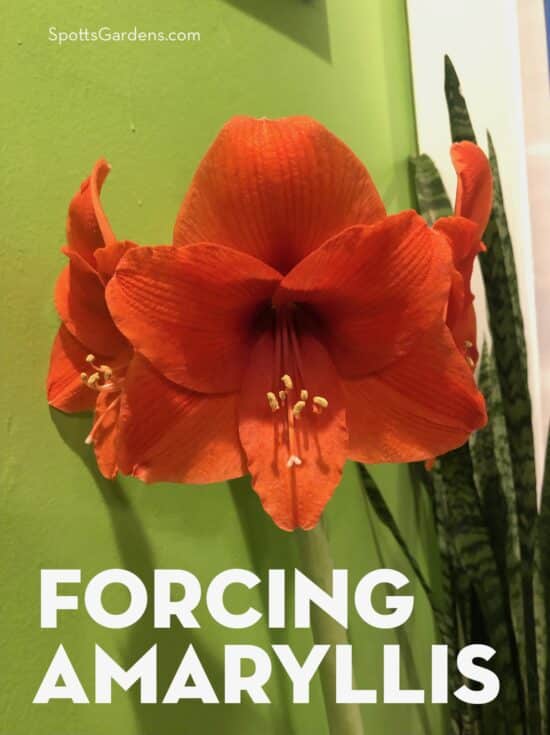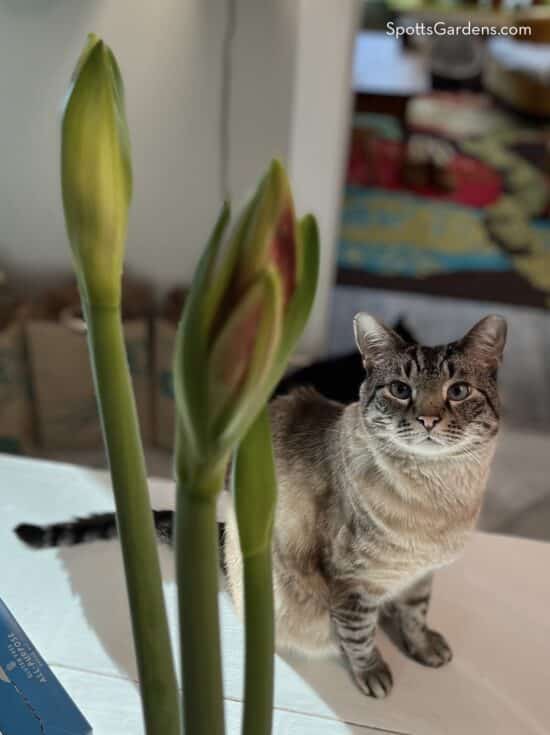Forcing—bringing plants into bloom out of season—is the perfect winter garden project. And no candidate for forcing is bigger and bawdier than amaryllis! Because this South American bulb’s natural bloom time lines up with North America’s winter, amaryllis is a cinch to force.
This winter bloomer is ubiquitous at Christmas time, when red, white, and pink varieties take center stage. But amaryllis can be even more welcome in February, when you’re dying for a shot of spring.
Single blooms are most common, but you can also find frilly doubles or exotic forms. And you’re not limited to the Christmas colors, either; amaryllis is also available in orange, salmon, pinks, and green-yellow.
Choosing Your Bulbs
The botanical name is Hippeastrum, (meaning “knight’s star”), but cultivars for forcing indoors are usually sold as “amaryllis.”
Kits that include a container and potting mix are a popular gift. Bulbs sold in a wax coating make an even tidier gift package; they require no water or soil. But to us, that takes all the fun out of growing them.
Instead, we prefer to purchase individual bulbs from online sellers like John Scheepers when we order our hardy bulbs in August. Order early; they sell out quickly!
You might also purchase amaryllis at a local independent garden center. Avoid big-box stores, which rarely store the bulbs correctly, increasing the chance they’ll start growing before you’re ready.
Choose large, firm bulbs. Large bulbs mean more stems and more blooms. Emerging leaves or stems are fine as long as the new growth looks healthy.
Store your bulbs in paper bags in a cool, dark place until you’re ready to start forcing them.
Forcing Your Amaryllis
- Choose a pot that is about one inch larger in diameter than your amaryllis bulb. The best pots are tall, narrow, and bottom heavy. Make sure your pot has drainage holes.
- To keep soil in the pot, put a piece of screening or a couple of broken pieces of crockery over the drainage hole. You might want to add some gravel or marbles at the bottom for extra weight (those blooms get heavy), but it’s not absolutely necessary. Add a layer of regular potting mix.
- Plant your bulb deep in the pot, so the narrow sides of the container can help hold up the stems and foliage. Put the bulb in pointy end up. Then fill the pot with soil, leaving about the top 1/3 to 1/2 of the bulb exposed.
- Water thoroughly. You can put the pot on a saucer to catch water, or put your planting pot inside a cachepot (a decorative pot without drainage holes).
- Move your pot to a brightly lit, warm (60°F) spot out of direct sunlight. Amaryllis is toxic to both cats and dogs. So unless your cat isn’t interested in plants (like Irv in the photo below), put it out of pets’ reach.
- Don’t water your amaryllis again until the flower bud and stalk appear, anywhere from two weeks to a month.
- Keep your bulb well watered (so that soil is slightly moist to the touch. Because these bulbs fill their pots so thoroughly, you might need to water almost every day.
- Enjoy those knockout blooms!
Encouraging Rebloom
If you’ve forced your bulb in soil, you can coax it into blooming again next year.
- After the flowers are done, cut the blooms off but leave the stalks until they turn yellow. Move the pot to a sunny spot and watch for the foliage to emerge.
- Treat your amaryllis like a houseplant the rest of the winter, watering and fertilizing regularly.
- Once outdoor temps are consistently above 55°F, harden off your amaryllis by leaving it outside for gradually longer periods.
- Let your pot vacation outside in a sunny spot through the summer. To reduce the need for watering, you can sink the entire pot into the soil in a sunny garden bed.
- In September, stop watering. Move the pot under cover so it won’t get rain either. Withholding water this way nudges it into dormancy.
- After the foliage dies back (but before frost), cut off the foliage and store the whole, completely dry pot in a cool dark place.
When you’re ready to force, water your bulb thoroughly and start the cycle again!


